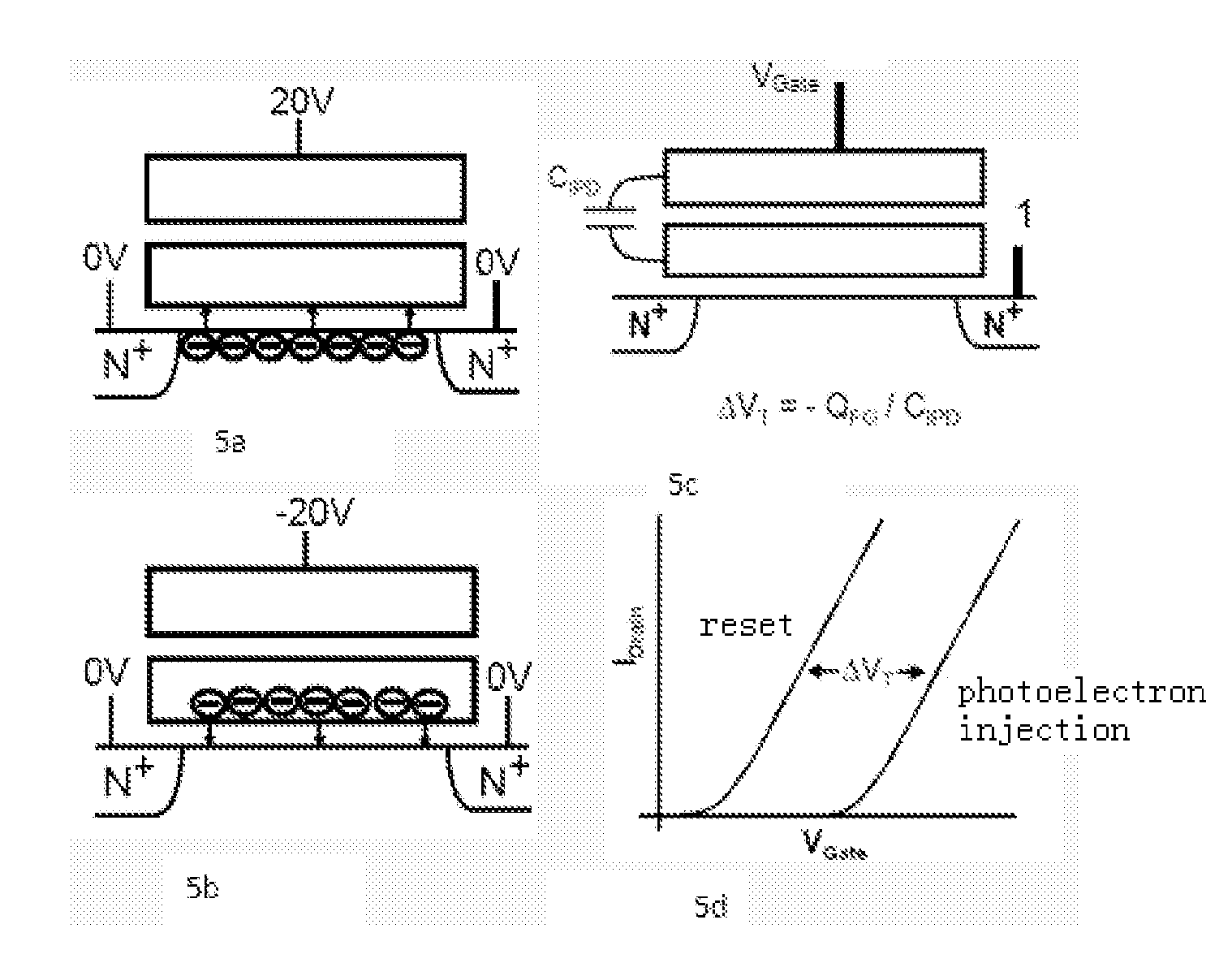Photosensitive Detector with Composite Dielectric Gate MOSFET Structure and Its Signal Readout Method
a dielectric gate and photosensitive technology, applied in the field of imaging detectors, can solve the problems of inability to solve, low yield, and difficulty in increasing imaging speed
- Summary
- Abstract
- Description
- Claims
- Application Information
AI Technical Summary
Benefits of technology
Problems solved by technology
Method used
Image
Examples
Embodiment Construction
[0080]The Working Mechanism and Procedure of the Photoelectrons Storage Layer are as Follows:
[0081]1) Photoelectron Collection and Signal Acquisition:
[0082]Refer to the diagram of the energy band and photoelectrons generation and transfer in FIG. 1 and FIG. 2.
[0083]1. Photoelectron generation. If photon hv>semiconductor Eg (or Eg+ΔEc), photon will be absorbed by semiconductor, then electrons can be excited from valence band to conduction band.
[0084]2. Photoelectron transfer. If the gate voltage is higher than substrate voltage, the photoelectron will transfer to the interface between substrate and bottom dielectric. If the voltage difference between gate and substrate is positive voltage and photon hv>semiconductor Eg+ΔEc, the excited photoelectrons can enter photoelectron storage layer directly.
[0085]3. Photoelectron tunneling. The Photoelectron can tunnel into the photoelectron storage layer when the electric field in bottom dielectric is high enough.
[0086]4. Photoelectron storage...
PUM
 Login to View More
Login to View More Abstract
Description
Claims
Application Information
 Login to View More
Login to View More - R&D
- Intellectual Property
- Life Sciences
- Materials
- Tech Scout
- Unparalleled Data Quality
- Higher Quality Content
- 60% Fewer Hallucinations
Browse by: Latest US Patents, China's latest patents, Technical Efficacy Thesaurus, Application Domain, Technology Topic, Popular Technical Reports.
© 2025 PatSnap. All rights reserved.Legal|Privacy policy|Modern Slavery Act Transparency Statement|Sitemap|About US| Contact US: help@patsnap.com



